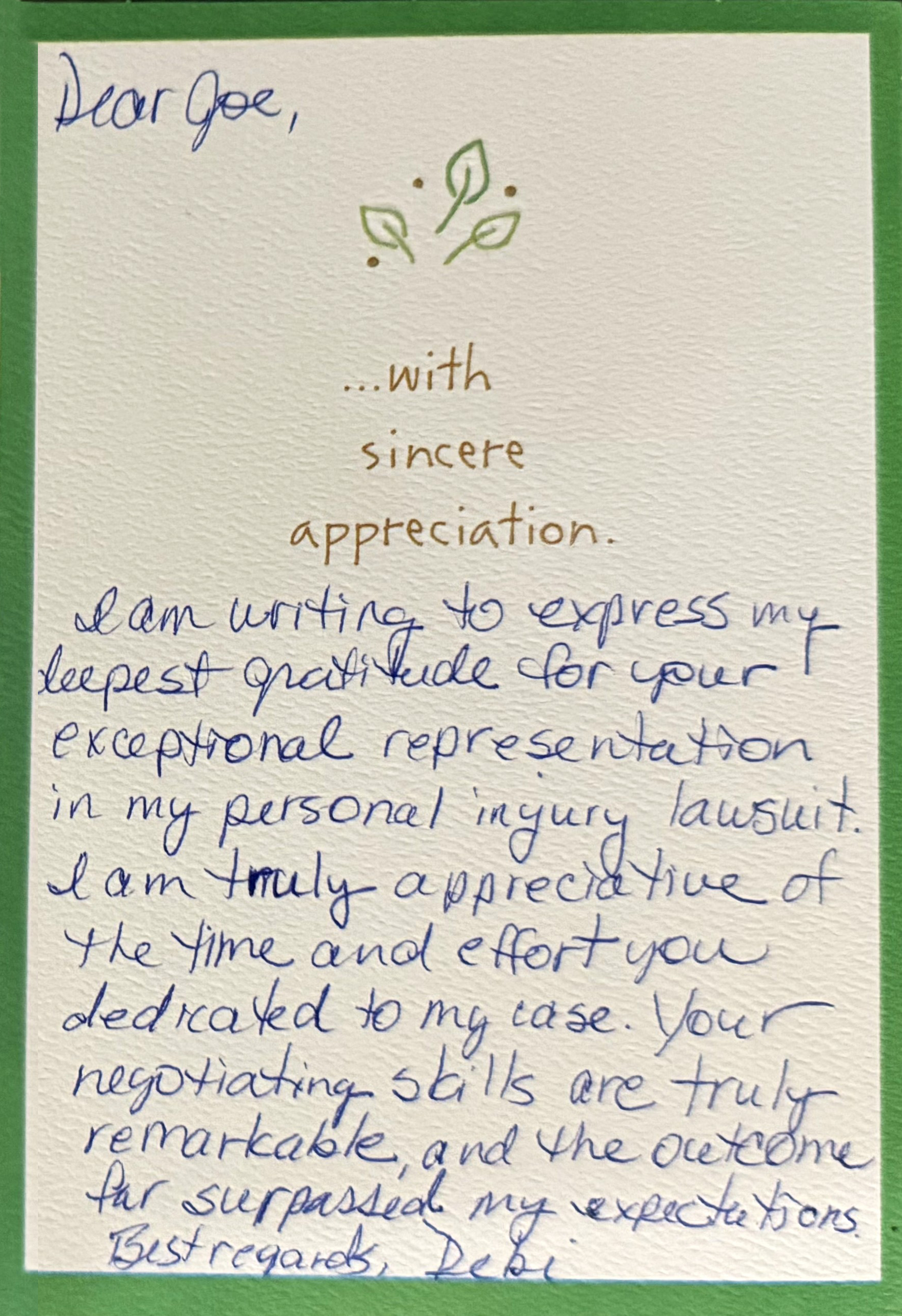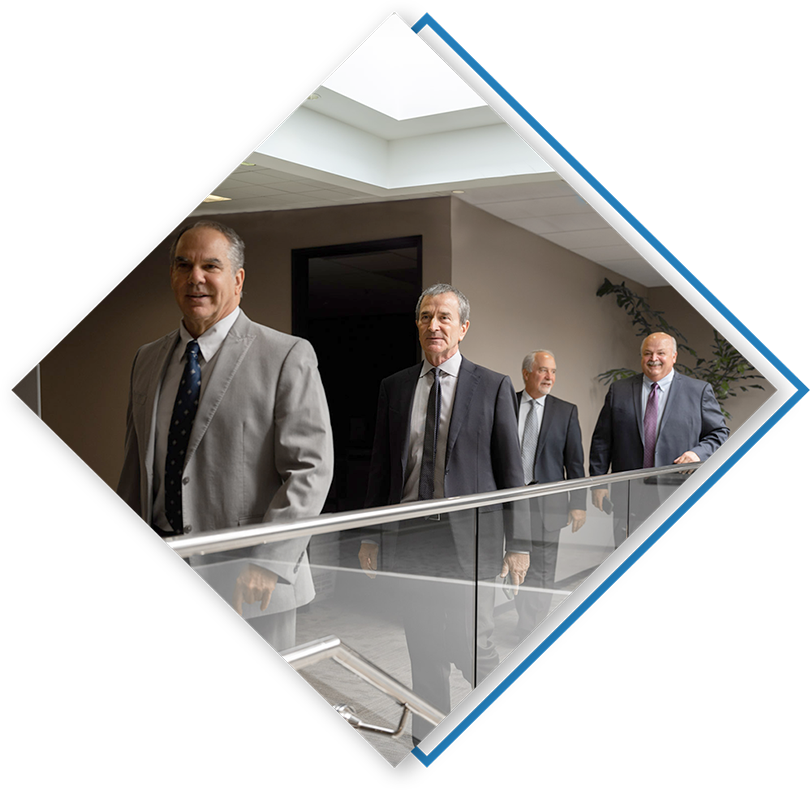Sacramento Premises Liability Lawyers
Fighting For Premises Liability Victims in California
At Dreyer Babich Buccola Wood Campora, we have built a premier legal practice committed to the needs of injured clients not only in the Sacramento area but throughout the state of California and nationwide.
We are the firm of choice for many other lawyers, doctors, and judges who refer their injured friends and loved ones to us, knowing we will provide them with the level of care they would expect for themselves.
Premises liability claims are an important component of our firm’s personal injury practice. Call us today if you have suffered harm at a public or private facility of any kind due to hazardous property conditions.
Call Dreyer Babich Buccola Wood Campora today at (916) 999-9132 or contact us online to schedule a consultation with our premises liability attorney in Sacramento.
Premises Liability Cases We Handle
Our Sacramento premises liability attorneys handle cases involving:
- Slip and falls
- Dog bites
- Unsafe parking ramp conditions
- Icy walkways
- Dangerous property conditions
- Swimming pool accidents
- Fires and explosions
California Premises Liability Laws
Every owner of a store, restaurant, amusement park, hotel, airport, shopping center, apartment, private residence, or any other physical building or facility has a non-delegable duty to maintain that facility in a reasonably safe condition.
They have a duty to inspect those premises on a regular basis to identify and correct, or warn about, hazards. Because that duty is non-delegable, the owner cannot shift their responsibility to anyone else.
Knowing and understanding the broad application of this law in California is just one of the reasons that our premises liability lawyers in Sacramento have built such a strong record of success in these cases.
Understanding Property Owners' Responsibilities
Premises liability is a complicated area of the law. After suffering a serious injury on a residential or commercial property, the injured party may hold the property owner accountable for the injury. Results of such cases can vary widely, depending on what the hazard was, whether the owner knew about the hazard, whether they took reasonable steps to prevent an accident, and more.
But, what does “reasonable” mean in this context?
Property owners in California must take steps to keep visitors on their premises safe. More specifically, property owners have a duty of care to keep their premises safe and prevent a foreseeable accident.
Now, this does not mean that property owners must prevent any and all accidents from happening on their property. However, it does mean that owners must take reasonable actions to inspect the premises, identify possible safety hazards, and address them promptly.
Such actions could consist of:
- A grocery store owner or employee displaying a “wet floor” sign after a spill or mopped floor
- A small business owner removing excessive snow or ice from pathways leading to their door
- A homeowner abiding by California law requirements to secure the area around their pool
- A hotel owner installing adequate lighting and security cameras on outdoor premises
Essentially, property owners must take steps to address dangerous conditions and warn visitors of potential hazards.
What You Have to Prove in a Slip and Fall Case
California property owners have certain responsibilities when it comes to maintaining their spaces and making sure they are safe for use. When property owners neglect to do this and someone suffers a serious slip-and-fall injury because of it, the injured party may be able to pursue a premises liability case. However, they must be able to prove that:
- That there was a defective condition or hazard: Injured parties must prove that a dangerous or defective condition existed and that the condition is what caused them to fall. Defective conditions could include potholes, obstructions on stairs, or broken staircase handrails, among other possible examples.
- That the property owner was aware of the hazard: A home or business owner must know about a hazardous condition in order to fix it. So, plaintiffs need to show that the property owner knew about or reasonably should have known about the dangerous condition that caused the slip and fall accident.
- That the property owner was negligent: The strength of a premises liability case also depends on the plaintiff’s ability to prove that the property’s owner’s failure to fix the defect or hazard is what caused him or her to fall and suffer injuries. It's important to work with a slip and fall attorney who has experience in these cases.
What If the Property Owner Blames Me for Falling?
If you slip or trip in a store, the store’s owners will try to blame you. Even when there was obviously a hazard that caused the fall, defendants will continue to insist you are to blame. Our lawyers have seen it all. Defendants will hide evidence, video surveillance film that captured the accident will disappear, and defendants will refuse to produce the statements of independent witnesses or a copy of any incident report that the injured person completed.
This is why it's critical to have a Sacramento slip and fall lawyer on your side.
FAQ About Premises Liability
How Does California Law Define 'Negligence' in Premises Liability?
Under California law, negligence in premises liability involves failing to maintain a safe property environment for visitors. This means the property owner must anticipate potential hazards that might cause harm, inspect their property regularly, and take preventive measures if necessary. In a court of law, demonstrating negligence requires showing that the owner had a duty to the injured party, breached this duty through their actions or inactions and that this breach directly resulted in injury. Understanding the specifics of negligence is crucial for building a strong premises liability case.
What Should I Do If I'm Injured Due to Unsafe Premises?
If you are injured on someone else’s property in Sacramento, it is essential to document everything about the incident as soon as possible. Take photographs of the hazardous condition, gather contact information from witnesses, and seek medical attention immediately, even if injuries seem minor. Prompt medical attention provides documentation, which is essential for any future legal claims. Contacting an experienced premises liability attorney is advised to ensure your rights are protected and explore potential compensation avenues.
Can a Property Owner Be Held Liable for a Third Party's Actions?
In certain situations, a Sacramento property owner can be held liable for injuries caused by third parties. This is particularly relevant in cases involving inadequate security, such as insufficient lighting or the absence of surveillance cameras, which might invite criminal activity. The property owner’s failure to take reasonable security measures can lead to liability if it can be shown that the harm was foreseeable and preventable with proper precautions.
Do Property Owners’ Insurance Policies Cover Premises Liability?
Most property owners have insurance policies that cover premises liability, which can compensate injured parties for medical expenses, lost wages, and other damages resulting from an accident. However, insurance companies often aim to minimize payouts. Therefore, understanding policy details and negotiating effectively is crucial. Property owners and injured parties alike should familiarize themselves with these policies' coverage limits and terms to better anticipate their scope. Legal assistance is recommended to navigate these discussions and to help injured parties receive adequate compensation.
Why Choose Dreyer Babich Buccola Wood Campora, LLP?
Choosing Dreyer Babich Buccola Wood Campora, LLP means accessing a wealth of legal knowledge and a personalized approach to each client’s situation. Our attorneys are dedicated to securing justice and fair compensation for our clients. Known for achieving record-setting verdicts, we offer steadfast representation and a commitment to upholding the rights of injury victims. Whether negotiating settlements or advocating in court, our tailored strategies reflect our comprehensive understanding of premises liability dynamics in Northern California.
Contact Our Premises Liability Attorney in Sacramento Today
We have purposely structured our firm to maximize our accessibility to you. You do not merely get processed by an assistant without ever meeting your attorney. Instead, our Sacramento premises liability lawyers take pride in their relationships with our clients, getting to know them so we can provide each client with legal representation directly responsive to their unique circumstances. In those details, cases are won, and compensation is maximized.
We invite you to schedule a free initial consultation with our Sacramento premises liability lawyer. Call us at (916) 999-9132 to reach one of our conveniently located California offices or send us a message.

Real Stories from Real PEople
Hear From Past Clients-
“
- Debi ”
”
-
“You truly made us feel like we were in the best most capable hands at all times.”
- - Susie and Alex -
“From the day we met you shed so much compassion and care.”
- - Camela
The Right Firm Makes A difference
-
We Have Helped Thousands of Injured Clients Secure Successful Verdicts & Settlements
-
We Have In-Depth Experience in All Types of Personal Injury and Wrongful Death Claims
-
Our Team Has Received Numerous Awards and Accolades Including “Best of the Bar", "Consumer Attorney of the Year” and More
-
You Can Count On Working with Your Own Lawyer and Receiving Prompt Responses to Your Concerns
-
No Case is Too Large or Too Small for Our Team to Handle
-
Lawyers, Doctors, Hospitals, Judges and Past Clients Continually Refer Cases to Us

Our team is here to help you seek the maximum amount of compensation available for your injuries. Start with a free consultation.

